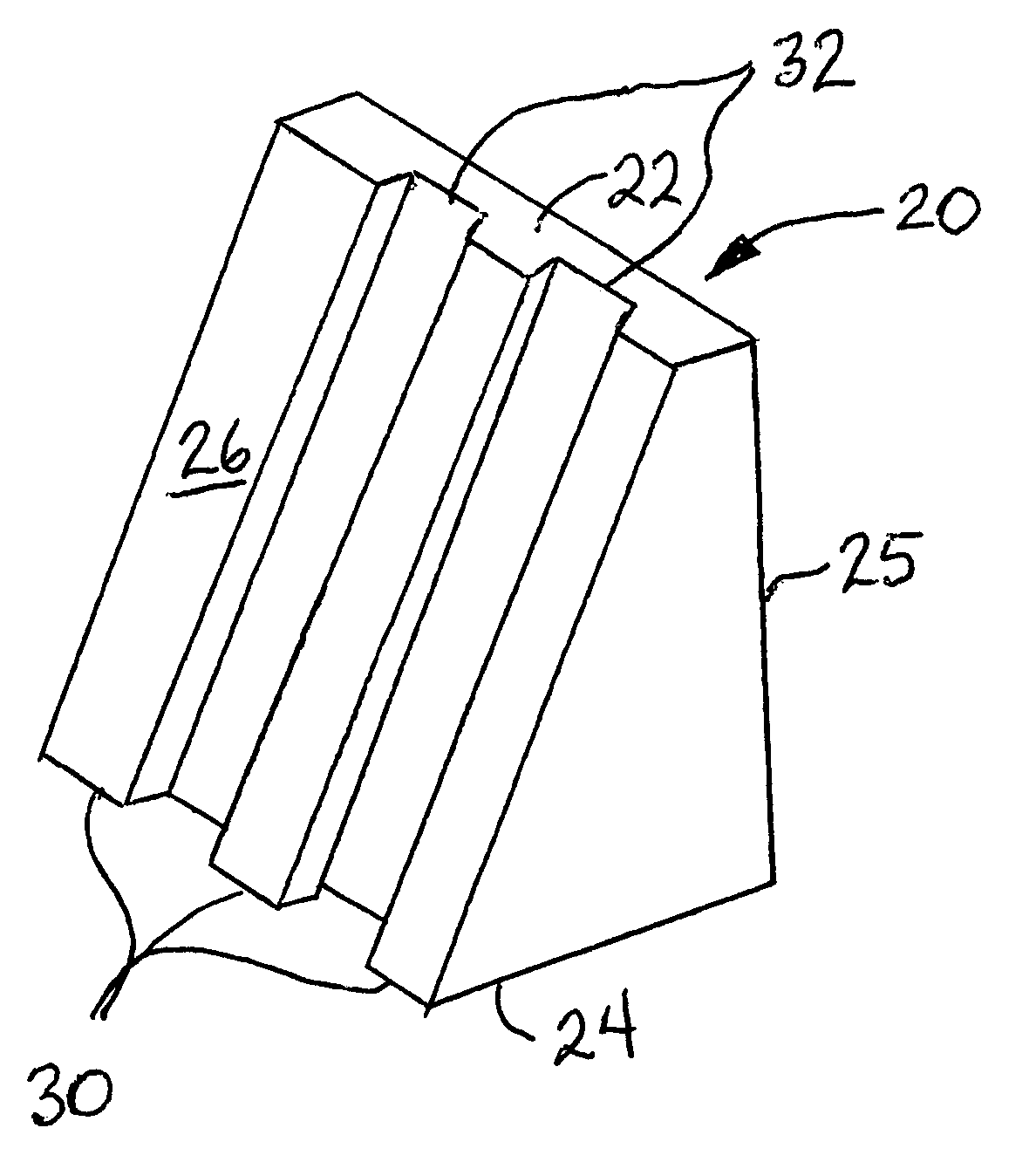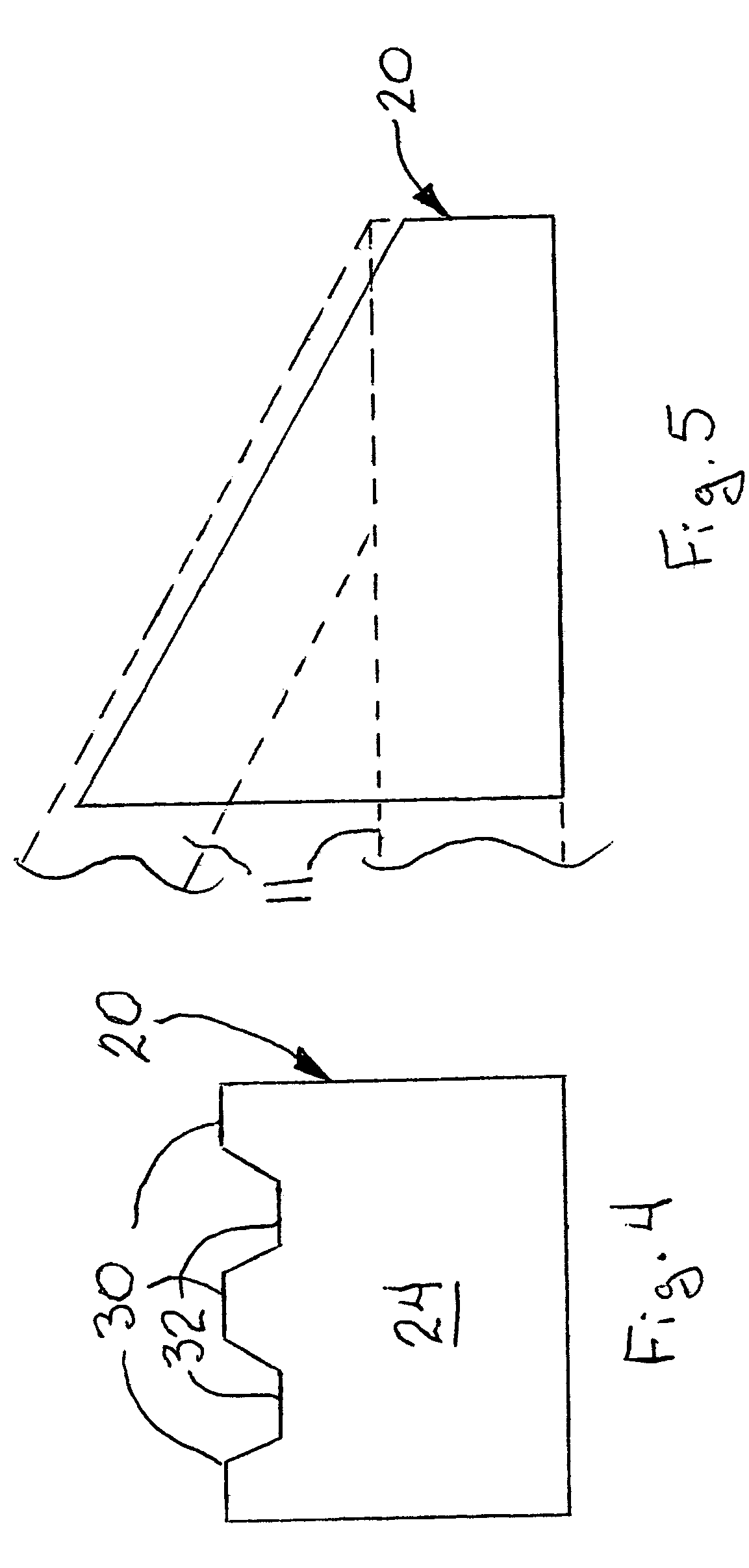Eave vent insulation
a vent insulation and vent vent technology, applied in the field of energy saving, can solve the problems of improper installation of insulation, mold, mildew, and possible dry rot of the joists, and achieve the effect of simple and inexpensiv
- Summary
- Abstract
- Description
- Claims
- Application Information
AI Technical Summary
Benefits of technology
Problems solved by technology
Method used
Image
Examples
Embodiment Construction
)
[0012]A first embodiment of the attic eave ventilation of the present invention is depicted in FIGS. 1–5 generally at 20. Vent insulation 20 is a block which is generally trapezoidal in shape, tapering from a front face 22 to a rear face 24 at an angle θ which is generally consistent with the pitch of the roof of the building with which the insulation is used. Insulation block 20 has a flat bottom surface 25 and a sloping upper surface 26. Angle θ (FIG. 3) is in the range of between 20° and 60° and, more preferably, in the range of between 30° and 45°. Insulation block 20 is preferably made of an insulative foam such as an expandable polystyrene, light weight and easy to handle while providing significant insulating R value. One material which has proven useful in this application is STYROPOR, an expandable polystyrene with 6% by weight pentane as a blowing agent. The insulation block 20 has an R rating of 3.8 at 75° F., although it is believed actual resistance to thermal transmis...
PUM
| Property | Measurement | Unit |
|---|---|---|
| angle | aaaaa | aaaaa |
| angle | aaaaa | aaaaa |
| angle | aaaaa | aaaaa |
Abstract
Description
Claims
Application Information
 Login to View More
Login to View More - R&D
- Intellectual Property
- Life Sciences
- Materials
- Tech Scout
- Unparalleled Data Quality
- Higher Quality Content
- 60% Fewer Hallucinations
Browse by: Latest US Patents, China's latest patents, Technical Efficacy Thesaurus, Application Domain, Technology Topic, Popular Technical Reports.
© 2025 PatSnap. All rights reserved.Legal|Privacy policy|Modern Slavery Act Transparency Statement|Sitemap|About US| Contact US: help@patsnap.com



